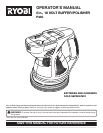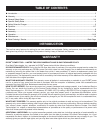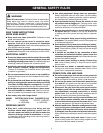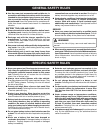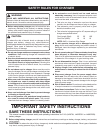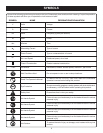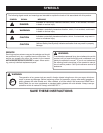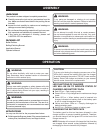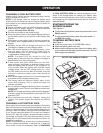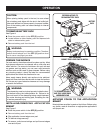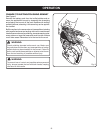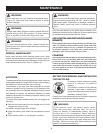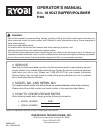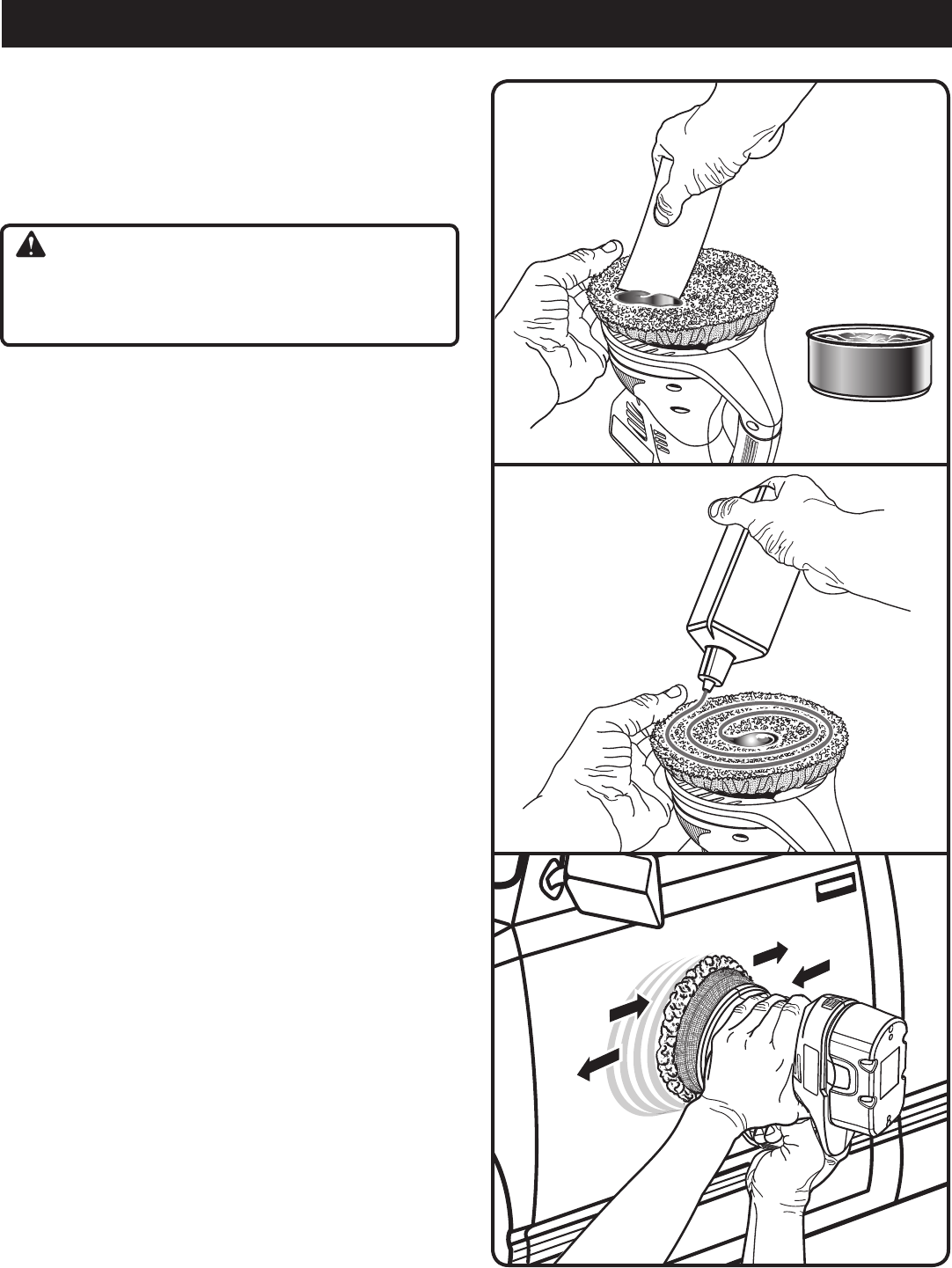
12
OPERATION
Fig. 8
APPLICATION OF LIQUID POLISH
See Figure 7.
Apply a small circle of liquid (about the size of a half- dollar)
around the center of the bonnet, followed by two more rings,
each slightly larger than the previous one. After the first
application, the bonnet will not absorb as much polish. Apply
two rings of polish to the bonnet for subsequent applications,
using half of the initial quantity.
APPLY POLISH TO SURFACE
See Figure 8.
While holding the buffer/polisher firmly against the surface,
slide the ON/OFF switch to the ON position (to the left).
Always start and stop the polisher on or against the surface
being polished.
Begin by polishing larger flat surfaces, such as the hood,
trunk and roof. Use a broad sweeping motion in a crisscross
pattern. Do not press down on the surface with the polisher.
Let the orbital action of the pad and bonnet do the work.
Once flat surfaces have been covered, polish curved surfaces
such as car doors and quarter panels. Use small circular
motions.
After applying polish to the entire surface, turn buffer/pol-
isher off. Wait until the pad stops rotating before lifting the
buffer/polisher from the surface.
For hard to reach areas, such as the underside of bumpers
or side mirrors, apply polish by hand.
WARNING:
Keep a firm grip on the tool with both hands at all times.
Failure to do so could result in loss of control leading to
possible serious injury.
Fig. 6
Fig. 7
APPLICATION OF PASTE POLISH
See Figure 6.
Use a putty knife or other flat, blunt object to apply approxi-
mately one rounded teaspoon of paste onto the bonnet. Evenly
spread the paste over the entire surface of the bonnet.
Do not apply paste directly to the surface being polished.
WAX



